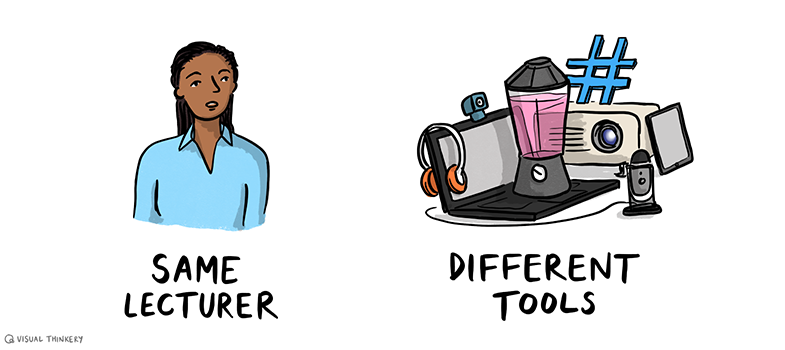My OpenLearn Create Profile
- Personalise your OpenLearn profile
- Save Your favourite content
- Get recognition for your learning
Already Registered?

Skills for Prosperity: Online Education
If you create an account, you can set up a personal learning profile on the site.
Ausubel, D.P. (1960) ‘Use of advance organisers in the learning and retention of meaningful material’, Journal of Educational Psychology, vol. 51, no. 5, pp. 267–72.
Beetham, H. (2007) ‘An approach to learning activity design’, in Beetham, H. and Sharpe, R. (eds) Rethinking Pedagogy for a Digital Age, Oxford, Routledge, pp. 26–40.
Bruner, J.S. (1966) Toward a Theory of Instruction, Cambridge, MA, Harvard University Press.
Cooper, S. (2016) 10 Best Practices To Be An Effective Online Teacher [Online]. Available at https://elearningindustry.com/ 10-best-practices-effective-online-teacher [Tip: hold Ctrl and click a link to open it in a new tab. (Hide tip)] (Accessed 17 June 2021).
Hill, C. (ed.) (2015) 10 Principles of Effective Online Teaching: Best Practices in Distance Education [Online]. Available at https://www.facultyfocus.com/ wp-content/ uploads/ 2015/ 02/ 10-Principles-of-Effective-Online-Teaching.pdf (Accessed 17 June 2021).
Love, C. (2015) SAMR: A model without evidence [Online]. Available at https://charlielove.org/ ?p=10025 (Accessed 15 June 2021).
Piaget, J. (1957) ‘The Child and Modern Physics’, Scientific American, vol. 196, no. 3, pp. 46–51.
Puentedura, R.R. (2017) A SAMR Ladder for Teacher Professional Development [Online]. Available at http://hippasus.com/ blog/ wp-content/ uploads/ 2017/ 09/ SAMRLadderForTeacherPD.pdf (Accessed 15 June 2021).
Skinner, B.F. (1968) The Technology of Teaching, New York, NY, Appleton-Century-Crofts.
Thorndike, E.L., Bregman, E.O., Tilton, J.W. and Woodyard, E. (1928) Adult Learning, New York, NY, Macmillan.
Vygotsky, L.S. (1986) Thought and Language (trans. from Russian and revised and edited by A. Kozulin), Cambridge, MA, MIT Press.
Wenger, E. (1998) Communities of Practice: learning, meaning and identity, Cambridge, Cambridge University Press.
For further information, take a look at our frequently asked questions which may give you the support you need.
If you have any concerns about anything on this site please get in contact with us here.





